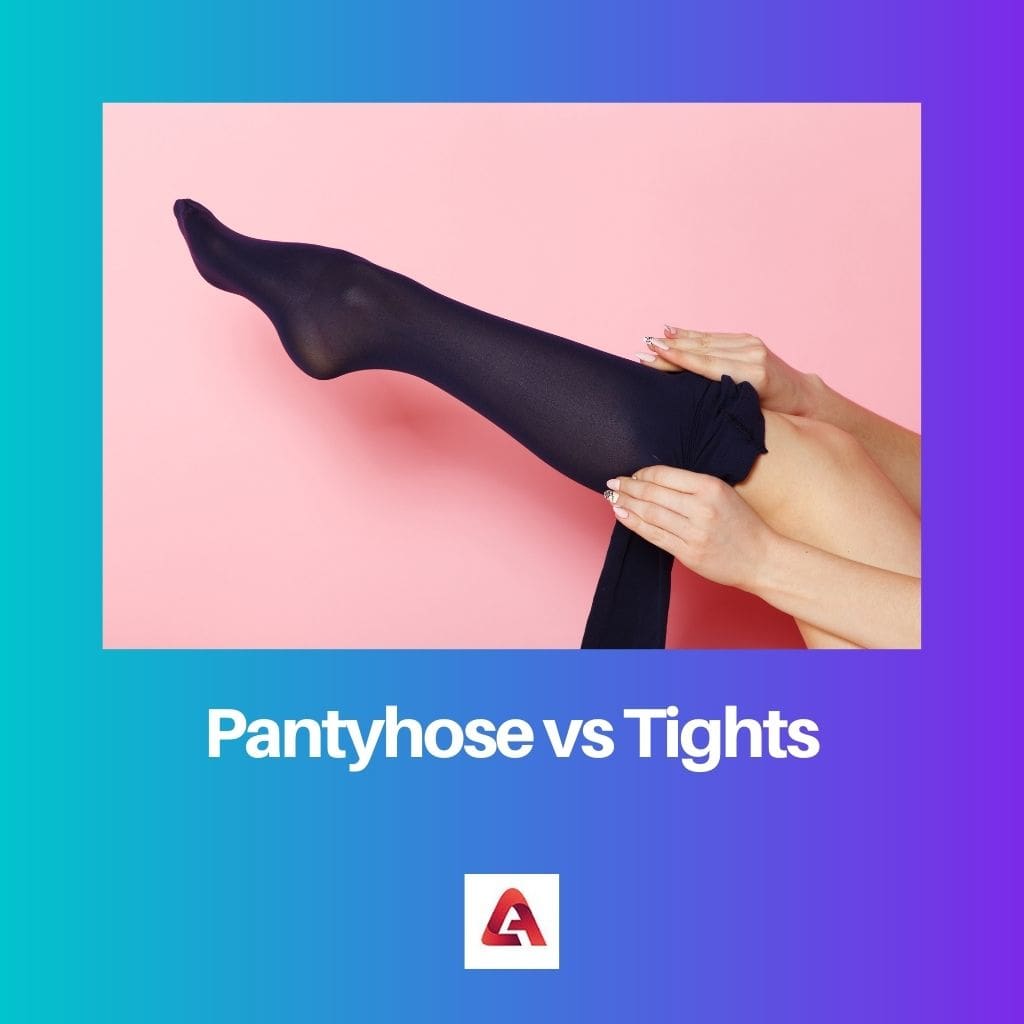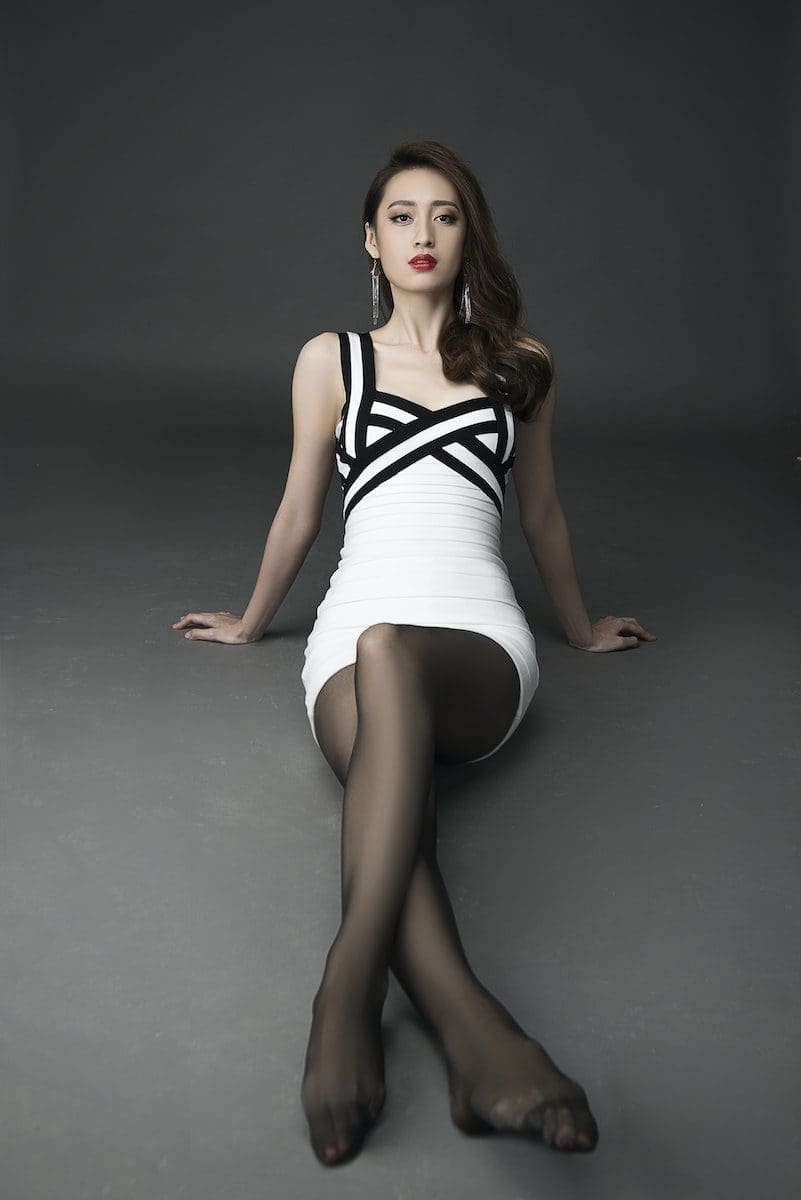Ladies’ fashion has never-ending garments that evolve in every period. The collections are more that can suit every occasion of their choice.
The leg garments for women began to flourish in the late 19th century. There were many exquisite leg garments that not only enhanced the beauty of a woman but were also considered comfortable to wear.
More importantly, comfort also comes with covering not-so-good-looking areas of the body. In that context, there are two exclusive leg garments that not only prove to be beautiful on a girl but also save them from embarrassment.
Pantyhose and Tights serve women’s fashion as a credible addition to their wardrobe. Both these garments run from their waist to their feet and offer to cover the entire part.
However, there are a few differences that make these garments stand apart.
Key Takeaways
- Pantyhose is a thin, sheer hosiery garment that covers the legs from the toes to the waist, made from nylon or a blend of nylon and spandex.
- Tights are thicker and more opaque than pantyhose, covering the legs from the toes to the waist but providing more coverage and warmth.
- The main difference between pantyhose and tights is their thickness and level of opacity, with pantyhose being thinner and sheerer, while tights offer more coverage and warmth.
Pantyhose vs Tights
Pantyhose is a piece of clothing that is used as a leg garment that serves as underwear for women, and it runs from their waist to their feet. Tights are a leg garment that is exclusive to women, and it covers their body from the waist down to their feet and can be worn casually.

Comparison Table
| Parameter of Comparison | Pantyhose | Tights |
|---|---|---|
| Usage | Pantyhose is mainly used as an undergarment. | It is normal to wear and not an undergarment. |
| Denier Count | 8 to 30 | 40 to 100 |
| Occasions | It can be worn on a formal occasion along with additional garments | Tights are preferred as casual wear. |
| Looks | Mostly see-through due to its thickness. | It fits tight to the legs but is not see through |
| Durable | Prone to get torn easily | They are thick enough to withstand rough usage. |
What is Pantyhose?
Pantyhose is a leg garment made for women who run from a person’s waist to the feet. It is considered to be Sheer tights or called Sheers.
Sheer Tights: These garments are made of fragile thread, making the material look semi-transparent.
Yes, Pantyhose is meant to be semi-transparent. A few of them can be see-through when it is wet too. Pantyhose came into existence in the year 1959.
It conveniently replaced stockings. Pantyhose has a denier count of 8 to 30; this means to say they are skinny in structure.
It is highly stretchable and widely used as hosiery.
Pantyhose is always worn with other hip or leg garments. It cannot be worn alone for the apparent reason that it is transparent in most parts of the region that it covers.
It is also prone to tear for its delicate nature; it is always advised to handle them with care. It conveniently covers the feet and calves without displaying any marks on the skin.
It is also considered an item of exotic clothing that a woman would love to wear on special occasions. It is indeed formal wear, unlike the other tight counterparts.

What are Tights?
Tights is an exclusive women’s leg garment covering the waist and feet. It is also a close fit that can cover the toe tips.
The denier count of tights is between 40 and 100. This means they are thicker than any of its other tight garments.
Though they are thick in texture, a few models in tights come as see-through ones. This happens when a knitted material is used for making the tights.
Typically, tights are made out of nylon. However, these days, knitted yarn is also an alternative material.
Widely used as informal wear, tights can be used as a workout outfit too. Unlike stockings or Pantyhose, tights can be worn stand-alone.
There are many types of tights available. The most common ones are running stockings and cycling tights.
As can be seen, tights are used chiefly in exercise areas, but they are also used casually.
The tights are an improvisation of leggings. The leggings failed to cover the toes, so another garment called tights was introduced that covered the toes too.
When the yarn is thicker than 40 deniers, it starts to be called Tights. Where in any leg garment below 40 called pantyhose?

Main Differences Between Pantyhose and Tights
- The main difference between pantyhose and tights is that pantyhose is widely used as an undergarment, while tights are worn regularly.
- The denier count of Pantyhose is between 8 to 30, while the denier count of tights is between 40 and 100. This means to say Pantyhose is very light and thin than tights.
- Because of their lightweight and thin nature, the pantyhose needs to be handled with care as they may tear, but the tights are rugged and can withstand rough usage. It is mainly used for working purposes.
- Pantyhose is not an item of standalone clothing; you must wear anything extra on them, while tights can be worn as it is.
- Pantyhose is formal, while tights are too casual for formal occasions.


The author’s arguments for the importance of pantyhose and tights in women’s fashion are well-supported and convincing.
I couldn’t agree more. The article offers a compelling case for the relevance of pantyhose and tights in fashion.
Absolutely, the article effectively emphasizes the cultural and practical significance of these garments in women’s wardrobes.
The article provided valuable insights into the historical context and practical differences between pantyhose and tights. It’s a great resource for anyone interested in women’s fashion trends.
I couldn’t have said it better. The depth of information in the article makes it a valuable reference for fashion enthusiasts.
The article did a great job of explaining the differences between pantyhose and tights. As someone who is interested in fashion history, this was an insightful read.
Absolutely, the historical context provided in the article adds depth to the understanding of these leg garments and their cultural significance.
I found the article to be somewhat verbose and repetitive. The same points were reiterated multiple times, making it a tedious read.
I see your point, but I appreciated the thoroughness of the explanations. It helped solidify my understanding of pantyhose and tights.
The author’s witty approach to discussing pantyhose and tights made this article a delightful read. Fashion history doesn’t have to be dry and dull!
I completely agree. The lighthearted tone of the article made it an engaging piece to read.
Absolutely, injecting humor into such topics makes learning more enjoyable and memorable.
This article seems unnecessarily trivial. I fail to see the significance in discussing the differences between pantyhose and tights when there are far more important topics to address.
I understand your perspective, but there is value in understanding the evolution of fashion and how certain garments came into existence. It provides insight into societal norms and preferences.
I really enjoyed learning about the history and differences between pantyhose and tights. It’s fascinating how fashion has evolved to offer such a variety of leg garments for women!
I couldn’t agree more. The details provided in the article are very informative and I learned a lot about pantyhose and tights.
I appreciate the in-depth analysis of the differences in material, usage, and appearance between pantyhose and tights. It’s refreshing to see such detailed exploration in fashion articles.
Absolutely, the meticulous examination of these leg garments showcases the complexity and thoughtfulness behind fashion choices.
I agree. The article’s focus on minute details adds depth to the discussion of pantyhose and tights.
I think the article offers a comprehensive comparison of pantyhose and tights, which is essential for individuals looking to understand these leg garments.
I agree. It’s important to recognize the nuances between different fashion items, and this article does just that.
Absolutely, the detailed breakdown of the differences provides a deeper understanding of these garments.
I fail to see why there is such an emphasis on pantyhose and tights when there are more pressing issues to address. This seems like a frivolous topic for discussion.
I understand where you’re coming from, but understanding the history and significance of fashion items contributes to a holistic view of human culture and societal norms.